#kamimizo
Video
Cruising on my self distractions. Lol 😅 #gmc #suburban #chevrolet #chevy #chevyck15oldfaceclub #c1500 #gmt400 #obs #obstrokas #obsnation #chevygang #obsgang #90struckscene #bringingbackthe90s #billetspecialties #babybillets #kamimizo #sagamihara #ジーエムシー #サバーバン #シボレー #シェビー #シェビーシーケー15オールドフェイスクラブ #シェビーギャング #オービーエスギャング #ビレットスペシャリティーズ #上溝 #相模原 勝手にクルージング。(笑)😅 (上溝高校) https://www.instagram.com/p/B9MGDQlJ__V/?igshid=t2pqr77gpey1
#gmc#suburban#chevrolet#chevy#chevyck15oldfaceclub#c1500#gmt400#obs#obstrokas#obsnation#chevygang#obsgang#90struckscene#bringingbackthe90s#billetspecialties#babybillets#kamimizo#sagamihara#ジーエムシー#サバーバン#シボレー#シェビー#シェビーシーケー15オールドフェイスクラブ#シェビーギャング#オービーエスギャング#ビレットスペシャリティーズ#上溝#相模原
1 note
·
View note
Text
What did the Shinsengumi eat every day?
Such a trivial matter is unexpectedly difficult to figure out.
It's probably because there wasn't anyone in or around the squad trying to keep a record of their mundane everyday life aside from the big events. When I introduced "The food diary of a low-ranking samurai who was assigned to work alone at the end of the Edo period" last time, I looked it up again, but I couldn't find any information that seemed certain.
That said, it’s not that there are no clues. Here are some of the things I noticed.
Misozuke (miso pickles)

There is a letter from Souji Okita to Miyagawa Otogoro (the brother of Kondo Isami) dated November 12, Keio 3. The passage, "Above all, thank you very much for sending me this delicious misozuke." was an acknowledgment for receiving misozuke.
This misozuke seems to have been made by Otogoro and brought to Kyoto by Hijikata Toshizo and Inoue Genzaburo, who went on a business trip to Edo. It must have been a favorite of Okita (or everyone including Kondo et al.), because they bothered to bring it all the way back from Edo.
Unfortunately, there is no mention of what was pickled. Vegetables, fish, or something else... just imagine.
(* Reference “Complete Letters of Hijikata Toshizo and Okita Souji”)
Duck
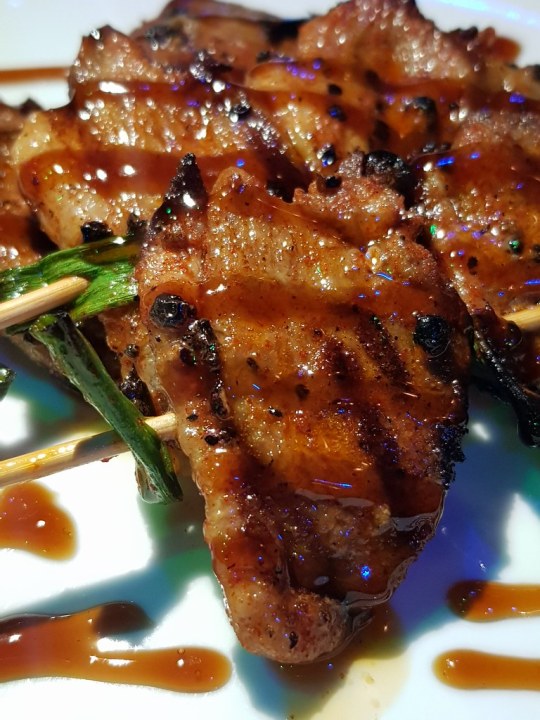
On New Year's Day, Keio 3, Itou Kashitaro went to the Kakuya (角屋) in Shimabara with Nagakura Shinpachi, Saito Hajime, and his confidants. On that day, the red-light district was closed, so they "bought 10 ducks along the way".
It seems that the intention was to cook these ducks and use them as a side dish.
I don't know how they cooked it, but I wonder if it was made into yakimono (grilled or pan-fried dish).
(* Reference 『新撰組顛末記』 and 『新選組奮戦記』)
Unagi (grilled eel)

It was around the time when the Boshin War was happening.
Nagakura Shinpachi secretly returned from Yonezawa to Tokyo with his comrade Haga Yoshimichi.
He said that he was satisfied with “eating Edo-style unagi for the first time in a while at Yamano's Jubako (山野の重箱) after arriving in Asakusa.”
"Jubako" is a long-established kabayaki (broiled fish) restaurant that has been around since the Kansei era. Currently, it is operating as a full-fledged restaurant in Akasaka.
Nagakura and his colleagues stopped by this shop for some reason, possibly being acquainted with the shop staff.
(* Reference 『新撰組顛末記』 and 『新選組奮戦記』)
Takuan (pickled radish)

There’s an anecdote handed down by the Kojima family on Onoji.
Hijikata Toshizo loved the homemade takuan of the Onoji / Hashimoto family, and he ate a heap of it every time he visited. It’s said that at one point he went home with a barrel.
The barrels that farmers used to make pickles are quite large. For example, a 4 to barrel has a height and diameter of about 60 cm and a capacity of about 72 liters. Even larger ones may be used.
If the takuan is packed tightly, it would be difficult to carry it by yourself. Did he move it into a smaller barrel, or is it an exaggeration to show that "he liked it so much"?
(* Reference 『新選組余話』)
Toromeshi (tororo (yam puree?) over rice)

There’s also another anecdote handed down by the Kojima family in Onoji.
When Kondo Isami visited Sato Tamehiko in Kamimizo Village, he met another visitor, Takatori Kousai, who was already there.
At dinner, they had an eating contest with tororo over rice, where the two of them competed.
Kondo ate 19 cups and Takatori ate 20 cups to win the game. Kondo, who hated to lose, could only surrender.
Kamimizo Village is located in Koza District, Sagami Province (currently Sagamihara City) and is close to Onoji Village.
Sato Tamehiko is the Head of Kamimizo Village. He seemed to have interacted with the Kojima family, Hashimoto family, and Kondo in Onoji.
Takatori Kousai is a doctor of Dutch medicine living in Kamimizo Village. It’s said that he was a student of Sakuma Shozan and was an eccentric as skilled as his master.
It seemed that Kondo and Takatori both liked toromeshi, and often ate this much.
(* Reference 『新選組余話』)
It is difficult to verify how accurate these tales are.
However, these stories told by people who have met and interacted with the Shinsengumi in person, so I feel there’s a certain degree of credibility.

Gate of the Onoji Kojima family home (Kojima Archives)
Local Gourmet Dishes
(source: https://bookrest.blog.fc2.com/blog-entry-228.html)
This time, I will give theories related to a specific area or a long-established specialty product.
Tamago Fuwa Fuwa (fluffy eggs)

Recently, I often see the theory that "Kondo Isami liked tamago fuwa fuwa".
Tamago fuwa fuwa is a dish made by mixing and steaming whipped eggs and soup stock, and has existed since the Edo period.
In the 2004 NHK Taiga drama, there was a conversation between Tsune and Isami, "Do you have anything you want to eat?" And he replied, "Tamago fuwa fuwa." I feel that this how the theory spread, but I think it started to spread shortly before that.
This tamago fuwa fuwa was a specialty dish of Fukuroi-juku, Tokaido (Fukuroi City, Shizuoka Prefecture).
According to the explanation of the Fukuroi Tourism Association, in Bunka 10, in the "Sendai Shimomukai Diary" (仙台下向日記) written by a wealthy merchant from Osaka named Masuya Heiemon, this dish was listed at the breakfast table at the Otawaki Inn in Fukuroi-juku.
Currently, it’s one of the highlights when sightseeing in Fukuroi City, and it’s offered at multiple restaurants in the city.
Kondo Isami also stayed at Fukuroi-juku.
It was October 26, Genji 1, on the way back to Kyoto from an Edo business trip. This is stated in the inn book of the Kojima family’s former inn held by the Tokaido Ishibe Historical Museum (Konan City, Shiga Prefecture).
If he stayed in Fukuroi-juku, it is possible that he was served this local specialty.
However, it seems that no record of him actually eating it has been found.
I'm not going to deny that possibility. However, it seems that the grounds are weak to make it his "favorite food".
Catfish Dishes
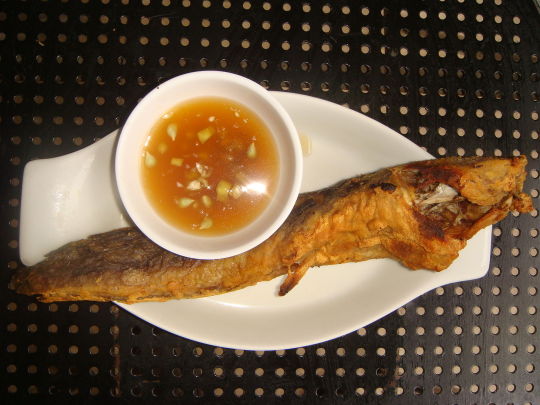
Regarding Isami Kondo, there is also a theory that "catfish dishes are his favorite".
NHK's "Kitchen Runs!" (キッチンが走る!) broadcasted on September 19, 2014 was titled "Discovery! Unique Ingredients Loved by Kondo Isami ~Saitama / Edo River Midstream Area~" (発見!近藤勇も愛したユニーク食材 ~埼玉・江戸川中流域~).
During the program, a catfish farmer in Yoshikawa City said, "Kondo Isami also came to a local restaurant and ate catfish."
Upon investigation, it was found that a long-established local restaurant advertised that "historical celebrities such as Kondo Isami, Katsu Kaishu, and Itagaki Taisuke also enjoyed our food."
Unfortunately, however, no specific information has been provided as to when and what the situation was.
If it is a fact, it will be around the time of the transfer from Goheshinden (五兵衛新田) in Ayase to Nagareyama in Keio 4.
Also, even if it is true that he ate catfish, can we say that he loved it?
In addition to the above, there are also stories that Kondo Isami visited "Oseki Mochi (Fushimi Ward, Kyoto City)" (おせきもち) and Hijikata Toshizo visited "Ohide Chaya (Higashiyama Town, Aizuwakamatsu City)" (お秀茶屋).
These stories are quite intriguing.
It also makes me want to try it if I get the chance.
However, I’d say that whether we can conclude it’s a historical fact is another matter.
--------
[T/N: I read that Kondo’s favorite food was manju (bun with filling), and he could stuff the whole thing into his mouth]

64 notes
·
View notes
Photo

琴、三味線の生徒さんたちが、ボランティア演奏して来ました!エッキミュージックサロンではレッスンで磨いた腕を社会に生かせる環境作りに取り組んでいます。 (Kamimizo Station) https://www.instagram.com/p/BvGYdLNFXgS/?utm_source=ig_tumblr_share&igshid=tbhdv8fnstid
0 notes
Photo
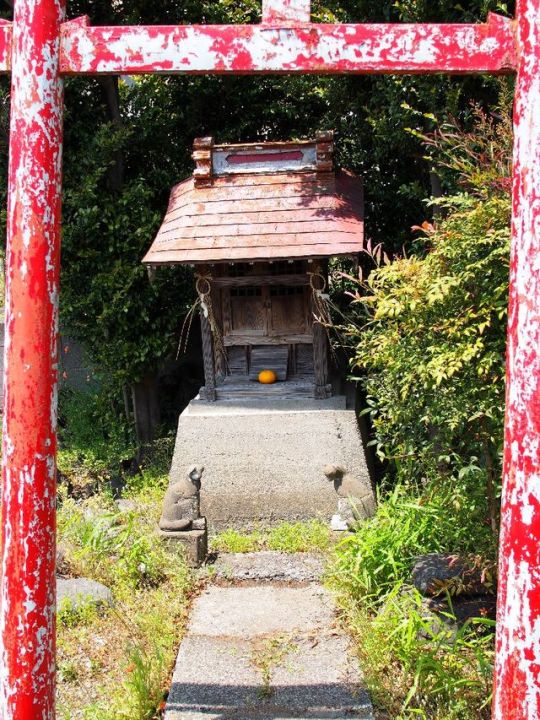

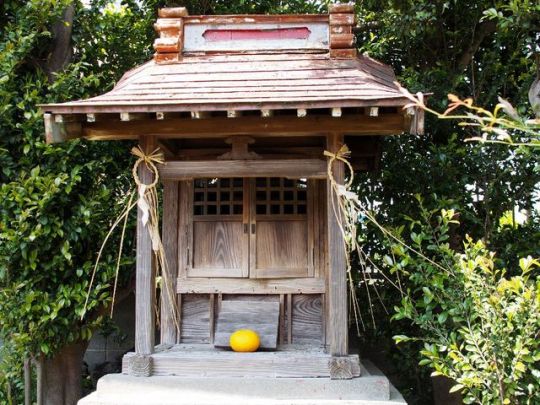

白笹稲荷神社(2017/05/11) Shirasasa-Inari-Shrine
神奈川県相模原市中央区上溝5丁目 Kamimizo 5chome, Sagamihara Chuo-ku, Kanagawa, Japan
祭神、由緒等未詳ですが、稲荷神社なので祭神は 宇迦之御霊と思われる。周りは住宅街の駐車場になっていて、神社だけがポツンと取り残されている。
33 notes
·
View notes
Photo
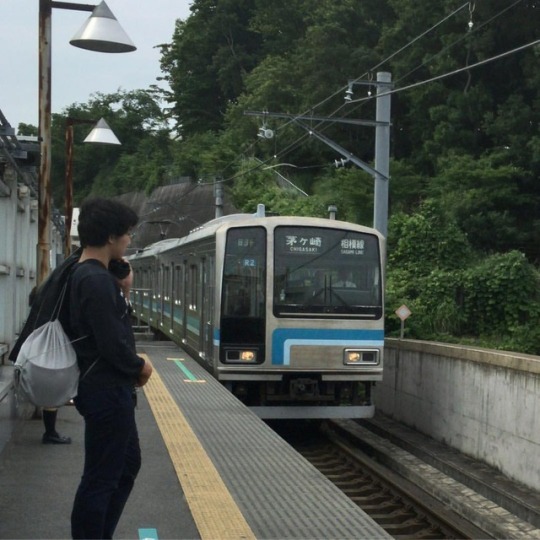
久し振りの相模線 「茅ヶ崎までのあいだ 貴方だけを想っていた🎵」って感じのレトロな電車じゃないのね 乗り降りの時のボタン押すタイミングが難しい #相模線 #相模線のドアは押しボタン式です (Kamimizo Station)
0 notes
Photo

And suddenly, I am over taken with a kind of sadness
In knowing that the edges of the cloud above my head
So exact in my mind at this moment
Will be nothing but a blur in attempt to remember
The feeling this place brought about in my heart
3 notes
·
View notes
Text
Okita’s letter about Yamanami’s death

English Translation
I start off this letter with a greeting.
The weather is getting warmer and I’m glad to know that everyone back home is alive and well and full of courage. I've been meaning to send a letter last month, but I’m sorry I only got around to it today. Please don’t be offended. Everyone in Kyoto is doing fine, myself included, so don't worry about us.
Just the other day, Hijikata-kun and a couple of others have set out to Edo. I would also like to go with them and visit all of you, but unfortunately there's too much work to do in Kyoto, so I'm unable to make the trip. Please ask Brother Hiji about the details.
I was going to send letters to Onoji Village [Kojima Shikanosuke] and Kamimizo, but because an incident suddenly happened, I haven’t had time to write them. If you would be so kind, please pass along my greetings.
Speaking of which, Yamanami passed away last month on the twenty-sixth.
That's all I have to say. Talk to you next time.
Best regards,
Twenty-first day of the Third month
Okita Soji
Sa. Hikogoro-sama
If it isn’t too difficult, please send my regards to everyone in the dojo.
That's all.
Original
(http://bakusin.com/kenka/shomen/shokan3.htm)
以手紙奉啓上候。暖気相増候得共、皆様益御勇猛被渡大悦至極奉存候。然は去月中書状差出処候得共、段(々)御無沙汰仕候段、不悪御思召無之様奉願候。
小子義始、京都詰合士一同、無事罷暮候間、乍憚此段御安意可被下候。就而は此度、土方君初外両三人東下仕候間、同々ニ而御期限伺方致東下候筈ニ候得とも、京都ニ而も諸事身分相応御用向繁多ニ而、江府乍残念いたし兼候間、委敷土兄より御聞取之程、奉願上候。乍末小野路、上溝辺江も別段書状差出候所、何分急用故差不出候間、宜敷御伝声可被下候段、御厚情被下。
山南兄、去月廿六日死去仕候間、就而もつて一寸申上候。
右は時候伺方迄、如此御坐候。余は後便之時申上候。恐々以上。
三月廿一日
沖田総司
佐 彦五郎様
何分申兼候得共、稽古場之義は宜敷奉願上候。恐々。
Commentary
Complete Letters of Hijikata Toshizo and Okita Souji:
The letter was written by Okita after Yamanami’s seppuku, which clearly shows his mood when he wrote the letter. Hijikata wrote a letter to Sato Hikogoro on March 1st, but said nothing about Yamanami; the following March 21st, Okita reported Yamanami’s death in one stroke, as if he didn’t want to touch on this topic. When the Okita wrote the letter, Hijikata had gone to Edo to recruit new members, so the Okita wrote, “Please hear about the details from Brother Hijikata.” Is it more painful for the person who wrote it, or is it more painful for the person who had to say it face-to-face? I dare not imagine.
By the way, when Hijikata went to Edo this time, he planned to bring Okita, but Okita did not go “because he was busy,” and he lost the opportunity to set foot on Edo while he was still healthy.
On the same page, Okita used the two terms “Hijikata-san” and “Brother Hiji” for the earthwork, followed by “Mr. Hijikata” and “Hijikata”. Very curious about how you usually call the Vice-Commander…
(source)
fushigi-dono:
Before that, I only translated New Year's cards from Okita. They are very traditionally written, and this letter is a complete guide! Although he has the same epistolary style in the original as Hijikata, he has some special words and phrases :) For example, about courage (this was in postcards), or “don’t think anything bad” (悪 し か ら ず - don't take this the wrong way; I had no intention of offending you, etc.) is often repeated.
So I see: Okita cuts someone with a sword, and apologizes: "I did not want to offend you!"
To write only half of the names is another feature. Notice he wrote "Sa" instead of Sato, and the absolutely wonderful 土兄.
The boy himself calls himself 小子 義 (shosi-sama). Literally translated - "It is no coincidence that Bakumatsu Shogeki [a poem collection] had “boku-chan”.
I generally love Japanese personal pronouns, it immediately shows how a person sees himself in relation to the outside world. “Ore” - “I am a tough and strong man”, “sesya” - “I am humble and insignificant”, etc. Now they are few, before there was more. This is first time I’ve seen "shosi-sama".
Greetings to Onoji and Kamimizo: these are Kojime, Hashimoto and Sato's relatives.
The line about the Yamanami tries to pretend "everything is fine". The boy confused the dates, Yamanami died not on the 26th, but on the 23rd, judging by the record in the temple where he was buried. The news is reported. By the way, if you know Japanese, check it out,
“I’m telling you a little here,” and then you can ask Hijikata, he will tell me more ... Since he didn’t take me with him, let him do the explaining now.
Do you know who he took with him? Ito and Saito! And this is with all the claims that Ito was at odds with him from the very beginning. But apparently, he could come in handy for recruiting new members...
At the same time, a piece of chronology from the book of Hijikata and some other sites:
February 23, Yamanami committed seppuku.
On March 10, Shinsengumi moved from Mibu to Nishihonganji.
On March 21, Okita wrote this letter.
On March 25th, Hijikata, Ito, and Saito departed for Edo for recruiting.
On April 5, they arrived in Edo and stayed in a mansion in the Ichigaya area (it seems that Kondo had a dojo somewhere)
On April 6, Hijikata’s brothers came to visit him: Kasuya Ryojun, Hijikata Tamejiro and Sato Hikogoro.
On April 12, Hijikata came home to Sato, where all the relatives and friends from the surrounding villages had already gathered. He stayed at home for 4 days and 3 nights, talked about life in the capital, visited guests, and guests came to him. This was his first vacation in two years.
On April 15, Hijikata left Hino for Edo. His nephew Toshinobu (the eldest son of Sato), apparently having heard the stories, was also going to go with him and sign up for Shinsengumi. Nobu, apparently also having heard the stories, categorically said I WON'T ALLOW IT! and didn’t let him go.
On April 27, Hijikata, Saito, and Ito departed from Edo with 52 recruits. It is documented that Hijikata was riding in a palanquin. As for the rest, there is no such information.
They drove slowly, stayed at expensive hotels for the night.
On May 10, the whole company arrived in Kyoto.
(source)
bakusin:
A letter issued by Okita at the time Hijikata Toshizo went back to Edo for recruiting. Isn't that why he wrote the brush after a long time, saying that it was a long time ago?
There is no proof that Okita brought back Yamanami from Otsu, but there remains a historical document of the same era, "Indignant and self-critical." Sannan suffered a serious injury in the previous year's Iwaki Masuya incident Since then, there seems to have been a considerable period during which no full-scale return to the field has taken place, and it is certain that he chose to die himself. I can’t help but wonder what Okita held in his chest when writing this at Nishi Honganji after the relocation. And my interests are endless, with this simple writing.
(source)
14 notes
·
View notes
Text
Hijikata bragging about women
Letter to Kojima Shikanosuke from Hijikata Toshizo, November 1863. This is his longest and most famous letter where he brags about women.


English Translation
At this time of winter cold, I wish you good health and joy.
As for us here, we are all alive and well, so humbly ask you not to worry.
Recently, on the 21st day, Matsumoto Suteske-dono wanted to come to Kyoto and he visited our barracks in Mibu. We found it difficult to decide what we should do with him, and so for the time being sent him back. I give him all regards.
First of all, it is extremely shameful to me that for so long I did not send you any news, but in my miserable letter it is impossible to tell you everything that is going on in Kyoto, therefore I have not written for so long, even though I was going to.
Please understand and humbly forgive me.
Also, please convey my respect to everyone, starting with your kind parents.
In addition, I ask you to convey my greetings and all of the above to the village of Kamimizo.
First of all, under the leadership of Matsudaira Higo-no-kami, the roshi in Shinsengumi are filled with ever greater strength and enthusiasm day by day. Please find out more about this from Matsumoto-san.
With deepest respect,
Having the honor of serving under the leadership of Matsudaira Higo-no-kami
Hijikata Toshizo
November
Brother Kojima
By the way, although we strive to serve our country faithfully and patriotically, I am attracted to women in ways I cannot describe with a brush. For example: in Kyoto, in Shimabara, there's Hanagimi-tayu and Ichino-tenjin; in Gion, there are about three so-called geiko; in Kitano, there are the maiko Kimigiku and Koraku; in Osaka, in the Shinmachi district, there's Wakazuru-tayu and two or three others; and in Kitano, in the Shinchi district, the number is so large that I’ll run out of ink if I listed them all. Imagine that!
Women make me forget to do my best for the country.
Toshizo has gone astray!
The current emperor:
From dawn to dusk, he only wants the good of the people,
And white waves beat against his heart, like the shore of the sea.
If there are any heroic men who have not yet made their name, then let them hurry to our capital.
Regards.
Original
(http://bakusin.com/kenka/shomen/shokan1.htm)
寒中之砌弥御壮健可被為在御座奉恐悦候。随而此方一同無事罷有候間、乍恐御休意被下候。然は、過廿一日松本捨助殿上京仕、壬生旅宿江向参上、如何之義有之候哉難計、仍之一先下向為致候間、彼是宜敷奉願上候。
一 久々御無音罷過何とも恐入候得共、小子之筆位ニ而ハ京師形勢申上兼候間、承り度折なから此御無音申上候。御推察之上御ゆるし被下候。乍末小嶋御両親様初メ宜敷被願上候被下候。何卒右之段上溝江も宜敷奉願上候。
一 松平肥後守御預り候新撰組浪士勢ひ日々相増、依之万々松本氏より御承り被下候。先ハ恐々不備。
十一月日 松平肥後守御預り
土方歳三
小島兄参
尚々、拙義共報国有志と目かけ、婦人しとひ候事、筆紙難尽、先京ニ而ハ、嶋原花君太夫、天神一元、祇園ニ而ハ所謂けいこ三人程有之、北野ニ而ハ君菊、小楽と申候まひこ、大坂新町ニ而ハ若鶴太夫、外弐三人も有之、北ノ新地ニ而ハ沢山ニ而筆ニ而ハ難尽、先ハ申入候。
報国の心ころをわするゝ婦人哉
歳三如何のよミ違ひ
今上皇帝
朝夕に民安かれといのる身の
心ころにかゝる沖津しらなみ (*御製は「心にかかる異くにのふね」)
一 天下の栄雄有之候ハ早々御のほせ被下候。以上。
Commentary
bakusin:
This one is a super famous letter from Toshizo, from the beginning to the signature, "under the leadership of Matsudaira Higo-no-Kami" is the official name of the Shinsengumi from the Mibu group. He shows his enthusiasm as a man who has reached his prime, but in the middle he breaks down and boasts about women. This is probably because a lot had changed from the time when he was a fourth son from a village in Tama who had no money or status, and because he's still a young man, so he still enjoys playing around. However, at the end, although it's a little different, it has a waka about the current emperor, and it's a very interesting composition as it returns back to the respectful tone. Matsumoto Sutesuke is a young Tama from the same country, and at this time he seems to have visited the Mibu city all over Kyoto and volunteered for enlistment. He was rejected and returned with a letter addressed to the Kojima family. I guess the good news of Toshizo also includes convincing him there. If he was treated as an old friend in front of the soldiers, saying "Oh, it's been a long time!" However, in the later years, Sutesuke was allowed to join the army when men were already in short supply, and he fought with Toshizo.
(source)
fushigi-dono:
This is one of the longest and most famous letters of Hijikata. :) It is written, apparently, on the same day as the previous one.
I humbly ask you to forgive me for such an unusual style of translation of this message, but the fact that I used to write “the style was preserved as much as possible” was really “possible”, but now it is really preserved. The more I understand the letter, the more I want to translate it that way! I tried, and it turned out that obsolete Japanese combinations are perfectly conveyed by obsolete Russian words. But if I don’t like it, I can remake it with a modern one.
Matsumoto Sutesuke - a prototype of an unpleasant man from the taiga drama (Shinsengumi! 2004), who was allegedly a childhood friend of Kondo and each time rushed to him shouting "Kat-chan!" But the real Sutesuke could not be a childhood friend of Kondo, if only because he was 11 years younger than him. In 1863, this guy was only 18, but he was not allowed into Shinsengumi, not because of that, but because he was the heir to his clan and his family was against it.
Here everything is written correctly about him (I checked with Japan and the “Furusato Hino”), except that in the end he entered Shinsengumi not in 1866, but in 1867. And about the wound in Japanese, no, but it is that he also fought in Aizu.
He ceded his right to inheritance to the fifth son, Zenosuke, born in 1856. After such a broad gesture, Hijikata, could not help but allow Sutesuke into the Shinsengumi.
Still, joining a squad was sometimes much more difficult than getting out of it! Matsumoto came out quite simply: he said goodbye to Hijikata in Sendai and set sail for his homeland.
Here is his photo of which year is unknown:

As for the list of Hijikata's women, on the Japanese Internet he is quoted everywhere, and each time in different ways. Our Vice-Commander wrote without punctuation marks at all (like how everyone wrote back then), so based on how we put commas in the list, the number of women changes.
For example, "Tenjin Ichino" could be "Tenjin, Ichigen":) (The name is also read differently).
I wrote with a small letter, because tenjin is a lower rank. That is, in Shimabara, he has two favorite high-class courtesans))
Geiko is the same as the "geisha", and Hijikata writes about them that way because they were called that way only in Kyoto.
Maiko are students of geisha. Neither of them were prostitutes, in fact, they decide on their own with whom to sleep or not to sleep.
There is information that Kimigiku was later redeemed by Hijikata, and she gave birth to a girl who soon died. This is known from Sato Toshinobu, the nephew of Hijikata, with whom on his last visit he went for a walk around the district and told him everything.
Shinsengumi was sent to Osaka in the summer of 1863, in fact, so that they would deal with the ronin from the rebel clans (I suppose they gave out travel allowances!). But instead, they only seemed to drink and walk around the women. Well, they also rode boats and fought with sumo wrestlers.
The line "Women make me forget to do my best for the country" - I don't know whose authorship. It seems like Hijikata.
And then he has a line about “going astray”
In Japanese, this cute expression literally means “was mistaken in reading” (as the character was read wrong and had ambiguity, and he apologizes for this). Hijikata loves to joke.
And this is one of the rare cases when something is written more or less legibly (I’ll make an avatar for myself!):
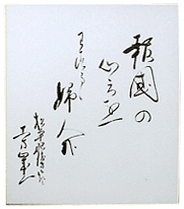
By the way, those two strips of letters that are at the top - this is not the whole thing. On the right side, the beginning of both is cut off, but I only found in this form.
And then there are the lines from the song, the author of which is none other than the Emperor Komei.
I'm not sure if I understood it correctly, so here is the original:
朝夕 に 民 安 か れ とい の る身 の
心 こ ろ に か ゝ る沖 津 し ら な み
Moreover, the original version of the emperor’s poem looks a little different:
朝 ゆ ふ に 民 安 か れ とお も ふ身 の
こ こ ろ に か か る異 く に の ふ ね
Something like this:
From dawn to dusk, he thinks only about the good of the people,
And in his heart his ship is moored.
(again, not sure. か か る has too many meanings !!!)
That is, Toshizo simply took it and edited the work of the Emperor. In the comments to this letter, the Japanese on the Internet write "absolutely fucked up, or what ?!" and "was he drunk or something?" LOL
(source)
#letters#letter from hijikata#translated#translated from russian#translated from japanese#document#fushigidono
9 notes
·
View notes
Photo
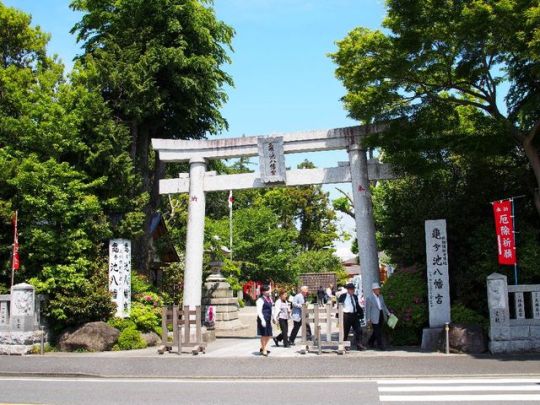





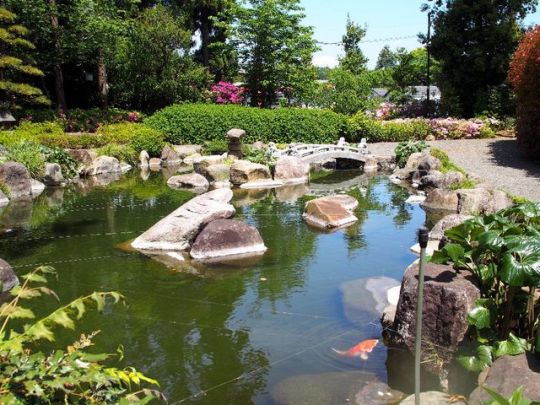



亀ケ池八幡宮 (2017/05/11) Kamegaike-Hachimangu
神奈川県相模原市中央区上溝 Kamimizo, Sagamihara Chuo-ku, Kanagawa,
Japan
主祭神は 応神天皇(誉田別命)。 相殿として神功皇后、比売神。
創建は不詳だが、元弘・文禄・明暦・延宝・宝暦と社殿再建の変遷があり、慶安2年に徳川幕府より朱印地を賜り、明治40年神饌幣帛料供進神社に列せられた。(当社Homepageより)
25 notes
·
View notes